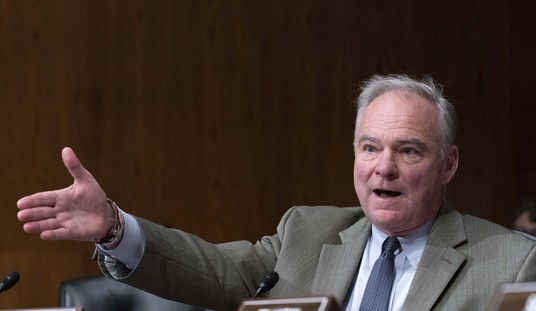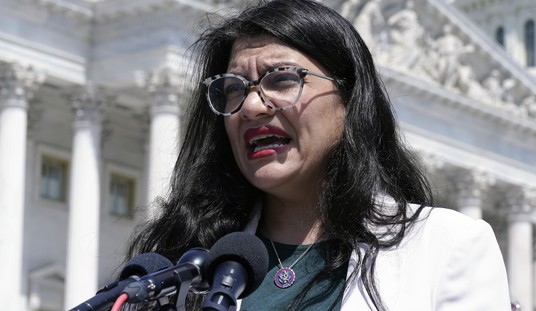[Posted with permission of the Institute for Combat Wounded Policy.]
While the shocking news at the Veterans Healthcare Administration, the Department of Veterans Affairs’ largest component, headlined the tragic deaths of American veterans waiting for treatment, subsequent studies confirmed what we already suspected – subpar care.
One could lay blame for the VHA’s poor performance on funding – but the quality of care issue for the VHA’s 6.5 million veteran patients is not driven by a lack of funding. The VA is well funded.
This year the VHA received an average of $10,000 per patient or $64 billion. Of course, the actual cost of veterans’ medical care varies by age and category, but some government studies cite an average as $5,000 per veteran. This suggests the VHA spends roughly $2 for every $1 of care it delivers.
In fairness, VHA as an actual healthcare provider must be distinguished from the costs associated with Medicare, Medicaid, Federal Employees Health Benefit Plan, and the Pentagon’s Tricare programs, which are medical insurance programs.
Equally shocking is the fact the total VA budget has more than doubled in the last decade from $64 billion to $160 billion (FY-2015). This increase represents a trebling in per capita costs from $2,500 in 2004 to more than $7,600 in 2014 -despite the fact the number of veterans over the same period decreased from 25 million to 21 million and will continue to decrease to 17 million by 2030.
At the current spending levels the VA and VHA budgets are unsustainable.
As with many tragedies, the VHA crisis forces us to look at options and solutions that must be proactive and precedent breaking, but sadly, the sheer size of the bureaucracies of the VA and VHA make it impossible for them to effect meaningful change in providing the quality, timely and cost-effective care America demands for its veterans. The VHA itself is the problem and not the solution.
But the lack of innovation at VHA is not inexplicable. Stepping back to the origins of the VHA sheds important insight into the present. VHA did not morph into the monstrosity it is by some sinister conspiracy; its evolution is attributable to the good intentions of the Congress. Like many federal programs, the origin of veteran healthcare has become obscured by time and habit. The VHA was created when the military services did not participate in Social Security and its progeny, Medicare, so there was a genuine concern that care for veterans could fall through the cracks. Since 1965 that has not been the case.
Today all members of the military services contribute to Social Security and to Medicare and just like all other Americans they will eventually graduate to SSA/Medicare based on age or disability.
The solution for the VHA is not as unconventional as it may first appear too many veterans and the Veteran Service Organizations, which advocate for them. The most practical and cost-effective evolution of VHA begins with the transition of the VHA from providing “hands-on healthcare” to veterans from its more than 150 hospitals, more than 1,000 clinics, and more than 230,000 medical professionals and transfer VHA’s 6.5 million patients into Medicare.
Medicare will not only save money by reducing overhead, such as plant, equipment, salaries and pensions, but will allow veterans to obtain all of their care at local, convenient, private-sector providers, just like the 50 million Americans currently enrolled in Medicare.
Most importantly, Medicare is insurance – it is not a healthcare provider like VHA.
Medicare does not compete with providers. Instead, it provides healthcare through Medicare approved private-sector physicians and hospitals throughout the United States using a well-established schedule of costs, fees and billing systems. There is no new requirement for an administrative bureaucracy like Obamacare.
No more years long waiting lists for veteran care. Furthermore, the transfer of veterans under the Medicare umbrella would ensure protection by civilian oversight such as VSOs and private sector watchdog organizations that would ensure maintenance of the standard of care for all Medicare recipients.
No more Inspector General reports or political spin – care comes on time and to standard or the guilty providers are held accountable. As a result, the necessity of maintaining the VHA becomes moot as all veterans will have access to Medicare just as all Americans do.
The threshold issue regarding veterans that do not meet the basic Medicare age or disability eligibility for Medicare today is an easy and inexpensive legislative fix when considering the alternative of a further expansion of VHA.
During the VHA phase out, funding for the additional costs of adding veterans to Medicare would come from the VHA’s federal budget.
While short-term expenses during the transition may be higher, long-term savings will be in the billions just from the elimination of facilities, equipment and personnel expenses.
Reduction of federal workers will come as a result of retirements, natural attrition and following the federal Office of Personnel Management’s transition program which can assist federal workers in moving to other agencies or the private sector. The federal medical workers should quickly move into the short-staffed private sector as it expands and creates jobs to accommodate the 6.5 million new private sector patients.
To divest itself of VHA’s infrastructure – land, buildings, and equipment –
Congress could create an independent organization to determine disposition of all assets in much the same fashion as it did with the Base Realignment And Closure commission it used to reduce the military infrastructure.
This BRAC format would ensure a smooth, efficient, and cost effective transition in the closure of facilities and disposition of equipment to maximize return on investment regardless of the locale or congressional districts affected.
To be successful in this transition from the VHA to Medicare, we must agree that our number one goal is to ensure veterans and their dependents receive the quality of care and services the American people expect. Since taxpayers are already paying dearly, Congress must approve the transition from the VHA without regard to political or partisan interests. In other words, there are no sacred cows, no trusted agents, and no indispensable parties.
Veterans and taxpayers are what matters – nothing else!
Second, we must agree that veterans’ healthcare and disability needs are not unique to VHA or the military. The injuries and illnesses veterans suffered in military service are similar to catastrophic injuries and illnesses suffered in the private sector.
Therefore, there should be no fear that veterans cannot receive quality care for their injuries and illnesses at private sector medical facilities throughout the U.S. and the world. In fact, many veterans are referred directly to private sector facilities for various specialties under the present system, and those rated 100 percent disabled transfer to Medicare after two years.
Capitol Hill’s typical problem solving practice of throwing more money at a problem and studying it for two to three years will not provide veterans with greater access to quality medical care. The answer is not the McCain-Sanders Bill that potentially adds $50 billion for additional medical personnel and facilities to an already bloated bureaucracy or the issuance of vouchers for medical care in the private sector. The real answer is the transition to Medicare now.
This solution is both bold and innovative, the groundbreaking transition will be difficult at times and many challenging hurdles will have to be overcome. Let’s start the dialogue and get to work: America’s veterans are counting on us and deserve our best efforts.
Other contributors: Col. William J. O’Brien Jr., USMC (Ret), Cap S. Layne Smith, USN (Ret),
The Institute for Combat Wounded Policy is a non-profit foundation dedicated to reforming the policies governing the administration of care to America’s veterans and their families. Colonel O’Brien and Captain Smith served at the Pentagon for three years dealing primarily with disability issues for SecNav and SecDef.








Join the conversation as a VIP Member